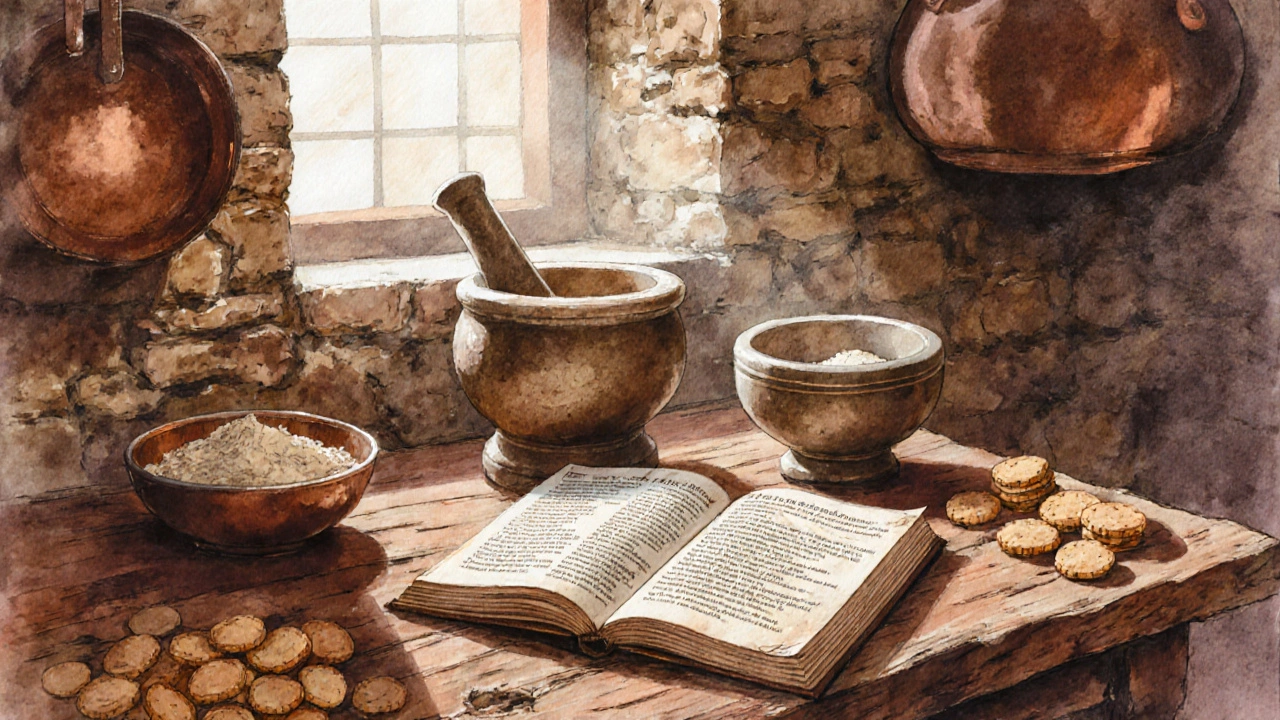Why the Macaron Got Its Name: A Sweet Journey Through History
Explore the fascinating history behind the macaron name, from its Italian linguistic roots to royal French courts, and learn why the term endures today.
When working with Macaron, a delicate French sandwich cookie made of almond flour, egg whites, and sugar. Also known as French macaron, it is celebrated for its crisp shells and chewy centers. The macaron name typically identifies the flavor or color theme, turning each bite into a visual and taste cue.
Every macaron name covers a specific flavor profile, from classic pistachio to wild hibiscus. This naming system lets bakers convey what to expect before the first bite. It also helps shoppers match their cravings to the perfect cookie, whether they seek something fruity, chocolatey, or herb‑infused.
Macarons belong to the broader Pastry, the art of creating baked goods that range from flaky croissants to intricate cakes. Pastry provides the toolkit—folding, piping, tempering—that makes a macaron’s smooth surface possible. Without pastry fundamentals, the delicate balance of moisture and structure would crumble.
Creating a perfect macaron Baking, the controlled process of applying heat to transform batter into a finished product demands precise temperature and timing. A slight shift in oven heat can turn a smooth shell into a cracked dome. Mastering baking basics equips you to experiment with new macaron names without sacrificing texture.
The techniques of pastry directly influence macaron texture, forming a clear semantic link: pastry techniques affect macaron texture. For example, proper macaronage—the gentle folding of the batter—ensures a smooth, glossy finish. Skipping this step or over‑mixing creates hollow shells, regardless of the name printed on the box.
Beyond technique, the macaron sits proudly within the larger Dessert, any sweet course served at the end of a meal or as a celebratory treat family. Desserts celebrate occasions, and a well‑named macaron can become the centerpiece of a party spread, a wedding favor, or a simple afternoon tea.
Ever wondered how many of these tiny treats could fill a building? One of our articles tackled the fun question: How Many Macarons Fit in a 10‑Story Tower? It broke down the math, showing that a single tower could hold roughly 2 million macarons if stacked tightly. This playful capacity estimate highlights how macaron size and shape are crucial when scaling recipes for large events.
Thinking about storage? Our guide on freezing ready‑made desserts, like tiramisu, offers tips that apply to macaron leftovers too. Properly sealed and frozen, macarons keep their flavor for weeks, though the texture may soften slightly. Knowing how to preserve desserts expands the usefulness of each macaron name you create.
Macaron trends often echo broader cake crazes. For instance, the surge of Red Velvet as America’s #1 birthday cake shows how a strong naming story drives popularity. Similarly, a catchy macaron name—say, “Midnight Mocha” or “Sunset Citrus”—can boost sales and social media buzz.
Health‑conscious bakers also ask: which dessert can satisfy a sweet tooth without overloading calories? While the healthiest dessert article explores low‑sugar options, it notes that a macaron made with natural sweeteners and almond flour can fit into a balanced treat plan. The name can highlight these benefits, like “Sugar‑Free Lavender”.
Our collection doesn’t stop at macarons. From vinegar tricks in cheesecake to the science behind sour cream in desserts, each post adds a layer to your baking knowledge. By understanding how these techniques intersect with macaron naming, you’ll feel confident to innovate across the sweet spectrum.
Ready to dive deeper? Below you’ll find a curated set of articles that expand on macaron names, pastry fundamentals, baking tips, and dessert trends. Browse the list to discover practical advice, fun facts, and fresh inspiration for your next kitchen adventure.

Explore the fascinating history behind the macaron name, from its Italian linguistic roots to royal French courts, and learn why the term endures today.